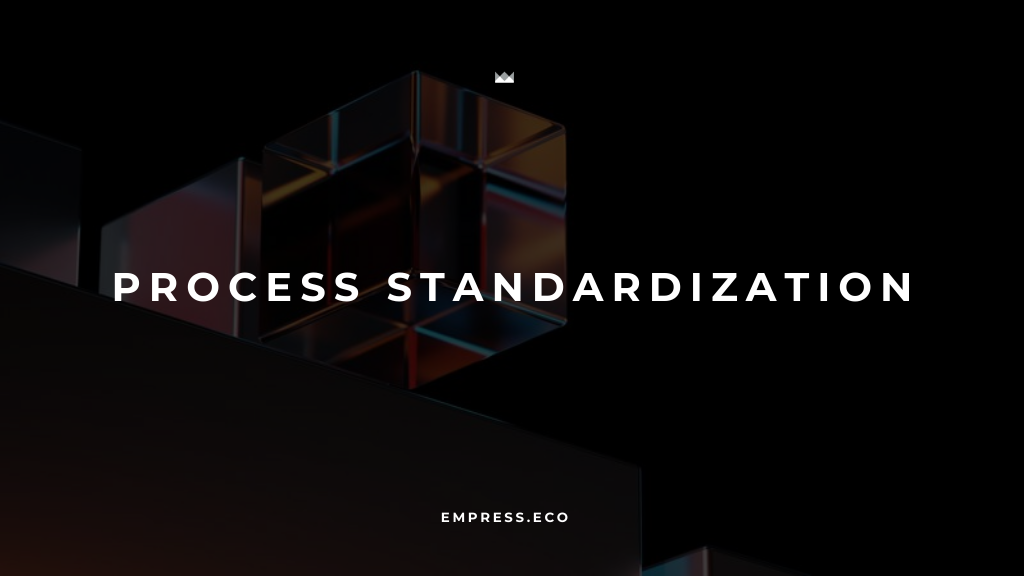
Process Standardization: Implementing Best Practices for Consistent Operations
Table of Contents
The pursuit of operational excellence is more critical than ever. One of the most effective strategies for achieving this is process standardization. By implementing best practices and ensuring consistency across all operations, businesses can drive efficiency, enhance compliance, and maintain high-quality standards. This article delves into the benefits of process standardization, the steps to implement it effectively, and the challenges that organizations may encounter along the way.
Key Benefits of Process Standardization
Process standardization offers a multitude of benefits that can significantly enhance a business's operational capabilities. Here’s how:
1. Increased Efficiency
One of the primary advantages of process standardization is the boost in efficiency it provides. When processes are standardized, they become more predictable and easier to manage. This reduction in variability allows tasks to be completed more quickly and with fewer errors. Employees know exactly what steps to follow, which minimizes confusion and delays.
For example, consider a manufacturing company that standardizes its production process. By having a clear, step-by-step procedure for assembling products, the company can reduce the time spent on production, minimize mistakes, and increase the overall output. The result is a more efficient operation that can meet customer demand more effectively.
2. Enhanced Compliance
Compliance with industry regulations and standards is a critical concern for many businesses. Process standardization helps ensure that all operations are conducted in accordance with these regulations, reducing the risk of non-compliance and the associated penalties.
For instance, in the pharmaceutical industry, stringent regulations govern the production and handling of drugs. By standardizing processes related to production, quality control, and documentation, a pharmaceutical company can ensure that it meets all regulatory requirements consistently. This not only reduces the risk of fines and legal issues but also enhances the company’s reputation for quality and reliability.
3. Improved Quality and Consistency
Standardization is key to delivering consistent quality in products and services. When processes are standardized, every task is performed in the same way, every time. This consistency leads to uniformity in output, which is crucial for maintaining customer satisfaction and trust.
Take the example of a restaurant chain that standardizes its food preparation processes across all locations. By ensuring that each dish is prepared according to the same recipe and procedures, the chain can guarantee that customers receive the same quality meal, regardless of which location they visit. This consistency is essential for building a strong brand reputation and encouraging repeat business.
4. Simplified Training and Onboarding
Another significant benefit of process standardization is the simplification of training and onboarding. When processes are standardized, new employees can be trained more quickly and effectively because there is a clear, documented procedure to follow. This reduces the time and resources needed to bring new hires up to speed, allowing them to become productive members of the team faster.
For example, a customer service department that has standardized its call handling procedures can train new agents more efficiently. By providing a clear script and guidelines for addressing common customer issues, the department ensures that all agents deliver consistent service, regardless of their experience level.
Implementing Effective Process Standardization
To successfully implement process standardization and reap its benefits, businesses must follow a structured approach. Here are the key steps involved:
1. Assess Current Processes
The first step in process standardization is to assess the existing processes within the organization. This involves evaluating how tasks are currently performed, identifying areas where there is inconsistency or inefficiency, and determining which processes would benefit most from standardization.
Data-driven insights are invaluable during this assessment phase. By analyzing performance metrics, employee feedback, and workflow documentation, businesses can pinpoint the processes that need improvement. For instance, if a company notices significant variation in production times across different shifts, this could indicate a need for standardized procedures.
2. Develop Standard Operating Procedures (SOPs)
Once the processes that need standardization have been identified, the next step is to develop Standard Operating Procedures (SOPs). SOPs are detailed, written instructions that outline the best practices for performing a specific task or process. They serve as a reference guide for employees and ensure that everyone follows the same procedures.
When creating SOPs, it’s important to be clear and specific. The procedures should be broken down into step-by-step instructions that are easy to understand and follow. Additionally, SOPs should be regularly reviewed and updated to reflect any changes in best practices or regulations.
For example, a financial services firm might develop SOPs for handling client transactions, ensuring that all employees follow the same procedures for processing payments, verifying identities, and maintaining records. This not only enhances consistency but also ensures compliance with financial regulations.
3. Engage Stakeholders
Successful process standardization requires the involvement of key stakeholders, including employees who are directly involved in the processes being standardized. Engaging stakeholders helps ensure that the standardized processes are practical, effective, and widely accepted within the organization.
Employees can provide valuable insights into the challenges they face in their daily tasks and offer suggestions for improving processes. Involving them in the standardization process also helps to gain their buy-in, making them more likely to adhere to the new procedures.
For instance, a healthcare organization standardizing its patient intake process might involve nurses, administrative staff, and physicians in the development of SOPs. Their input can help create a process that is efficient, patient-centered, and compliant with healthcare regulations.
4. Implement Training Programs
Once SOPs are in place, it’s essential to provide comprehensive training to ensure that all employees understand and adhere to the standardized processes. Training should cover not only the specifics of the SOPs but also the rationale behind them and the benefits of following standardized procedures.
Ongoing training and support are also crucial. As processes evolve and new employees join the organization, continuous training ensures that everyone remains aligned with the standard procedures.
For example, a logistics company that standardizes its inventory management process might conduct regular training sessions to ensure that warehouse staff are proficient in the new procedures. This helps prevent errors, reduces downtime, and ensures that inventory is managed consistently across all locations.
5. Monitor and Refine Processes
Process standardization is not a one-time effort; it requires ongoing monitoring and refinement. Regularly reviewing the standardized processes helps ensure they remain effective and relevant. Performance metrics should be tracked to assess the impact of the standardization on efficiency, quality, and compliance.
When necessary, adjustments should be made to the SOPs to address any issues or changes in the business environment. This continuous improvement approach helps maintain the benefits of process standardization over the long term.
For instance, a software development firm might monitor the effectiveness of its standardized code review process by tracking metrics such as code quality, defect rates, and review times. If the data indicates that the process could be improved, the firm can update its SOPs and provide additional training to its developers.
Challenges and Considerations
While process standardization offers significant benefits, it also presents certain challenges that businesses must navigate:
1. Resistance to Change
One of the most common challenges in implementing process standardization is resistance to change. Employees who are accustomed to their own ways of working may be reluctant to adopt new standardized procedures. To overcome this resistance, it’s essential to communicate the benefits of standardization clearly and involve employees in the process from the outset.
For example, a retail chain standardizing its customer service procedures might encounter resistance from long-time employees who prefer their own methods. By explaining how the standardized procedures will lead to better customer experiences and higher sales, and by involving these employees in the development of the SOPs, the chain can help ease the transition.
2. Balancing Flexibility and Consistency
While standardization is important for ensuring consistency, businesses must also allow for some flexibility to accommodate unique situations or customer needs. The challenge lies in finding the right balance between maintaining standardized processes and allowing for exceptions when necessary.
For instance, a consulting firm might standardize its project management process to ensure consistency across all client engagements. However, the firm might also allow project managers some flexibility in adapting the process to meet the specific needs of individual clients.
3. Resource Allocation
Developing and implementing standardized processes requires an investment of time and resources. Businesses must allocate sufficient personnel, budget, and tools to support these initiatives. This includes dedicating resources to the development of SOPs, training programs, and ongoing process monitoring.
For example, a manufacturing company that standardizes its quality control processes might need to invest in new software, training programs, and additional staff to support the implementation and monitoring of the standardized procedures.
Conclusion
Process standardization is a powerful strategy for businesses seeking to implement best practices and achieve consistent operations. By standardizing processes, companies can enhance efficiency, ensure compliance, and improve quality. As organizations strive for operational excellence, effective process standardization will be essential for maintaining a competitive edge and achieving long-term success.
In today’s fast-paced business environment, where consistency and reliability are key differentiators, the ability to standardize processes effectively can set a company apart from its competitors. By following the strategies outlined in this article, businesses can successfully implement process standardization and realize its full benefits—driving performance, reducing costs, and delivering consistent value to customers.
Empress Newsletter
Join the newsletter to receive the latest updates in your inbox.



